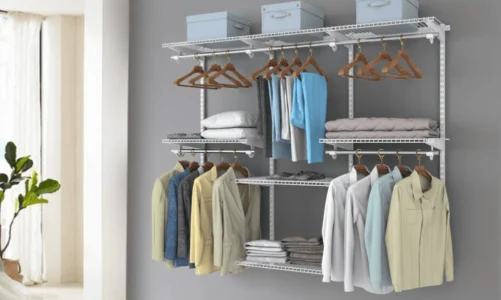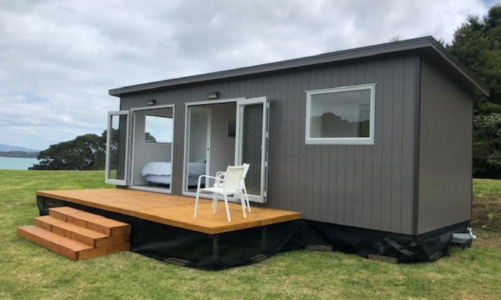Whether you’re planning a DIY refinishing project or are looking to buy a new dining table, it’s important to consider the finish on the table. Epoxy is one of the most versatile and durable options available. In this article, we take a closer look at the advantages of using epoxy to finish a table and whether it’s the ideal choice for you.
What is epoxy?
Epoxy is a versatile chemical substance that can be used for a wide variety of applications from electrical components and industrial moulds to a robust finish for commercial flooring and timber furniture.
Epoxy consists of two parts: a resin and a hardening agent. When these two parts are mixed together a chemical reaction occurs and a hard, rigid substance is formed.
Epoxy resin can be used as an adhesive, a repair agent and a finish for wooden furniture, including dining tables. It has a number of properties which make it desirable for dining tables, countertops and other high use applications.
What are the benefits of using epoxy to finish a timber dining table?
Epoxy resin is one of the most popular and professional dining table finishes because it’s highly resilient and can cope with moisture and everyday wear and tear. The main advantages of epoxy are:
Durability
Epoxy is stronger and more durable than other finishes like polyurethane and varnish. It can cope with high levels of compression, for example when heavy objects are placed on it. This makes epoxy a great choice for applications that get high, everyday use like dining tables.
Moisture Resistance
Epoxy is excellent at resisting moisture and humidity. This is ideal for dining tables which are repeatedly exposed to moisture and need to be cleaned on a daily basis.
Scratch Resistance
The hard surface that epoxy forms resists being scratched and is not easily damaged, making it highly desirable for dining tables and countertops which are frequently used or for families with children.
Easy to Maintain
Epoxy finishes are easy to clean and maintain. This can be done with a range of cleaning methods without the table losing its shiny appearance. Since epoxy resin creates a non reactive surface, it is ideal for a dining table which comes in contact with a range of chemicals.
Versatility
Epoxy can be used with a wide range of materials and table types to achieve a high level finish. It can also be used to repair timber tables.
Single Coat
Unlike varnishes, penetrating oils and water based finishes, epoxy only requires one coat to achieve the desired look.
Are there any disadvantages to epoxy resin?
As with any type of finish, epoxy also has its weaknesses and these should be considered when deciding on the ideal type of finish for your project.
Curing time.
Epoxy resin takes a long time to cure, so using it to finish a table can be a time heavy project compared to other finishes. Epoxy may take 12- 24 hours to cure whereas some varnishes dry in only an hour or two.
Not beginner friendly.
If not applied correctly, epoxy resin can form bubbles in the surface which can not only disturb the appearance of the table, but also prevent the epoxy from forming the strongest layer possible.
Unlike most varnishes and finishing oils, epoxy is not ideal for beginner projects as it requires some level of skill to get right. Varnishes and penetrating oils tend to have clear, user friendly instructions that can be easily followed at home with little trouble.
Extra work for oily woods.
Epoxy resin doesn’t bond as well with oily woods. It can still be used as a finish on oily woods, but a preliminary layer of polyurethane should be applied first to improve the bonding.
Is epoxy always the best choice?
Although epoxy is highly versatile, it might not always be the best choice for finishing a table. It really depends on the nature of the project and the desired final result. Below are two scenarios that might work better with another type of finish.
You don’t want a high gloss finish.
Every type of finish has its own distinct final look. Epoxy tends to be high gloss, which can look excellent in both commercial and residential settings. However, if you prefer a table that has a matte or more natural appearance, epoxy might not be the ideal finish for you.
Varnishes and penetrating oils are the most popular options if you want to achieve a natural matte look that enhances the colours and textures of the wood. Although, it’s important to keep in mind that these options won’t be as durable as an epoxy finish. Varnishes can also discolour significantly over time, changing the appearance of your table.
You are finishing a table yourself.
Although epoxy is one of the best options when it comes to durability and usability, it isn’t as quick or easy to apply as other finishes. Varnishes, penetrating oils and water based finishes tend to be more beginner friendly and can be applied easily at home with a brush or clean rag.
Epoxy resin, on the other hand, requires some level of skill to get a high quality result. Care should be taken to avoid bubbling in an epoxy finish. The curing time for epoxy is also quite long, sometimes up to 24 hours.
If you are planning on finishing or refinishing a dining table yourself and have not had much experience, epoxy might not be the most user friendly choice. However, if you are planning on getting your table professionally finished or are in the market to buy a new table, epoxy is an excellent choice.
Buying a new dining table? Consider an epoxy finish for maximum durability.
If you are going to buy a new timber dining table and timber dining chairs, consider looking for a manufacturer that uses epoxy as their standard finish. This will give the table greater strength and durability, preserving its appearance for a long time to come.




